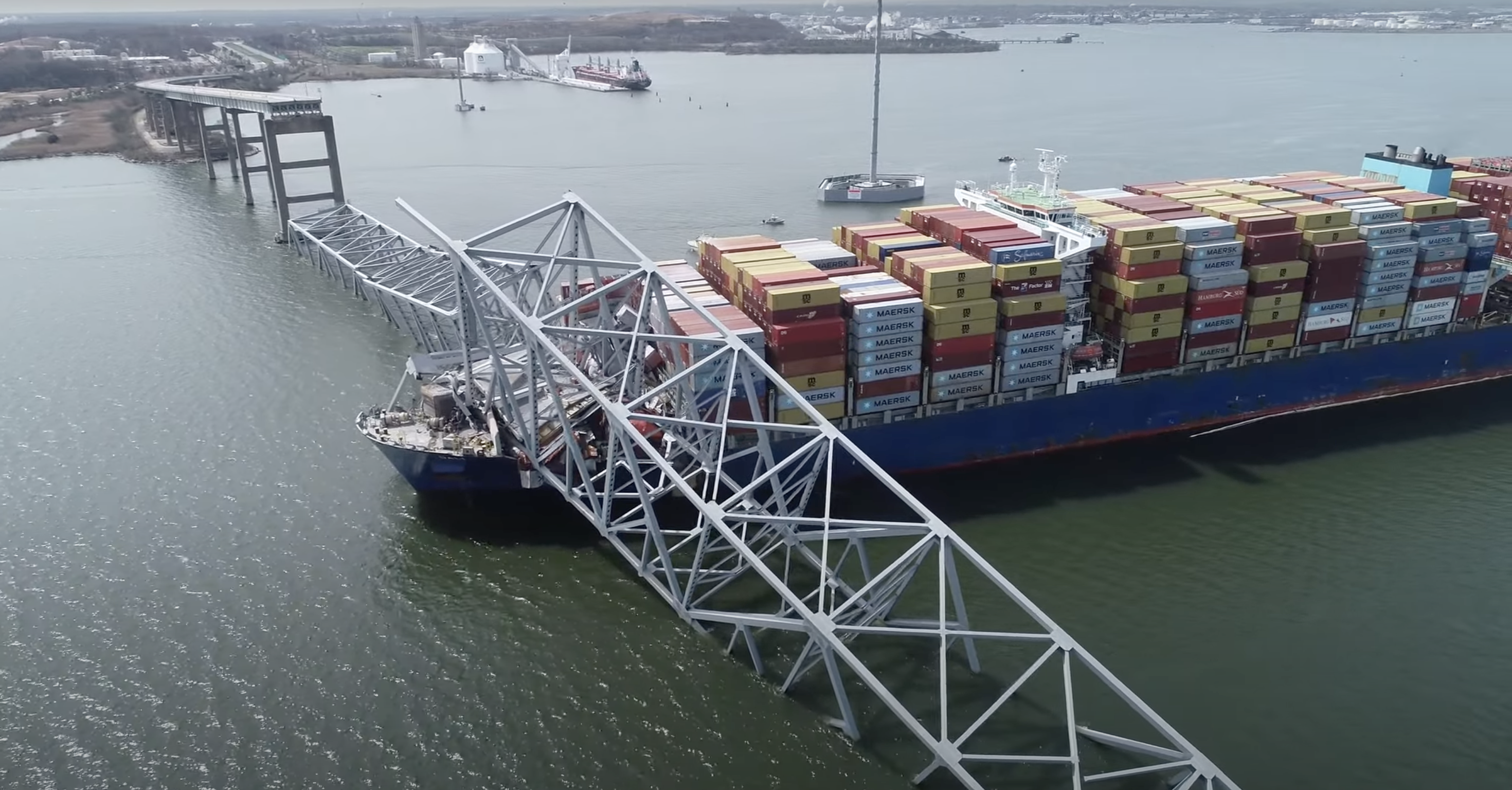In the early hours of 26th March 2024, a Singapore-flagged vessel Dali made contact with one of the supporting pillars of the Francis Scott Key bridge causing it to collapse right away. The vessel was heading out of Baltimore port and was meant to pass between the bridge pillars but unfortunately, it struck one of them, and the impact led to the incident. In this brief article, we analyze the incident and try to understand the reasons behind it.
What We Know So Far
The Francis Scott Key Bridge is 47 years old and a major thoroughfare over the Patapsco River. It was around 1:30 AM local time on 26th March 2024 when the container ship Dali lost power twice as it approached the bridge.
The vessel was manned by an all-Indian crew that immediately raised a mayday call and alerted the authorities. This gave the police crucial minutes to halt motorists from boarding the bridge.
There were, however, eight construction workers on the bridge at the time of the incident. While two of them have been rescued, one of them is seriously injured. The search is still on for the remaining six workers, but at the time of writing this article, authorities do not hope to find them alive because of the frigid temperatures of the Patapsco River.
Reasons for the Collision
The videos of the incident show that the vessel suffered two power failures in the lead-up to the incident. Power failures onboard ships cause them to lose steering capabilities. There are, however, measures in cargo ships to recover power as soon as it is lost.
The video shows that this is what happened. Once the power was lost at 1:24 AM, it came back on at 1:25 AM as the backup generator came online. The same can be confirmed by the thick smoke that can be seen rising as the vessel regains power. However, the vessel lost power again at 1:26 AM causing a second blackout. The recovery from the second blackout was also immediate but it was unfortunately too late to steer the vessel away from the bridge. The crew also dropped anchor to reduce the vessel’s speed but it still ended up colliding with the bridge at a speed of 7 knots at 1:27 AM.
The Maryland governor confirmed that the Francis Scott Key bridge construction was up to code. A loaded cargo ship has very high inertia and momentum. The weight of the ship is comparable to the bridge itself. In the case of a collision, a monumental force transfer takes place which is very difficult to absorb and deflect. The Baltimore Bridge collapsed as a result of this force transfer.
The National Transportation Safety Board (NTSB) arrived at the scene at 6:00 AM for the investigation. The Coast Guard is assisting the NTSB in the search and rescue efforts along with the investigation. It is too early to pinpoint the exact cause of the accident.
At the outset, the collision looks like an incident, and there is no terrorist angle involved.
Impact on the Global Supply Chain
The collapse of the Francis Scott Key Bridge knocks the Baltimore terminal out of commission. This terminal handles the largest number of automobiles in the US with some 850,000 vehicles passing through it annually. In 2023 alone, more than 80 billion dollars of cargo passed through Baltimore port including foreign cars, trucks, and farming equipment.
The bridge collapse exacerbates the strain on the global shipping network caused by the ongoing drought in the Panama Canal and instability in the Middle East. With the terminal out of reach, the traffic would need to be diverted to other ports such as New York, Norfolk, Montreal, Halifax, and Vancouver.
However, experts say that not all of the cargo destined for Maryland can be diverted and the crisis will lead to jams both on sea and land. The domino effect will impact American consumers further down the supply chain. The cost of items will increase in the medium term as the clean-up and bridge reconstruction will likely take a few years.
The bridge collapse will probably not have a major impact on international shipping by itself. However, the cumulative effect of the Middle East instability and the Panama Canal will add up and cause supply chain issues.
Summary
The bridge is part of a national highway and a crucial component for the city and the country’s commerce and economy, not to mention that its collapse is shutting down a major waterway. The long-term priority for the NTSB remains investigation, environmental consideration, traffic, and getting cargo vessels in and out of the Port of Baltimore.
Key ports such as Baltimore need to do more to ensure the safe passage of cargo ships through the tugs and other methods to prevent similar incidents in the future.
Nautilus Shipping extends its deepest sympathies to families, loved ones, and others affected by this significant event.

Leave a Reply